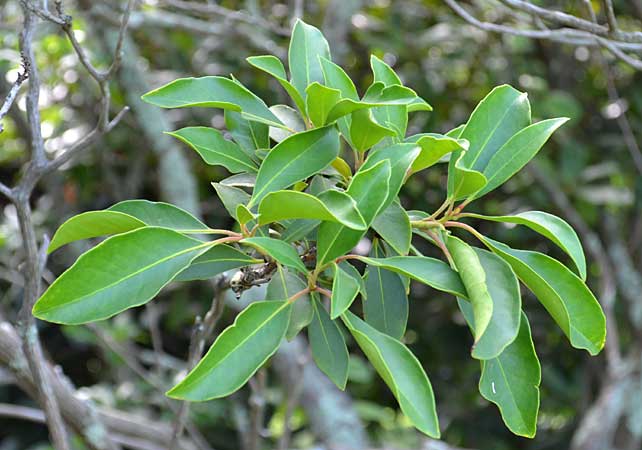15. MOUNTAIN LAUREL
Kalmia latifolia
CT State Flower

In Winter, Mountain Laurel fades into the background, blending in with its surroundings. It is a broadleaf evergreen (keeps its leaves all year round) and is closely related to azaleas and rhododendrons (Heather family, Ericaceae)
SPRING

Mountain Laurel may be grown as a shrub or small tree. They grow slowly, so this specimen has been at the Arboretum for some time. Based on its tree diameter, it could have been planted in the 1940s by Charles and Leila Hunter (benefactors of Westmoor Park).
SPRING FLOWER BUDS

The showy flower buds of Kalmia latifolia develop throughout the spring, and will bloom in late June or early July.
FLOWERS

The remarkable flowers are presented in groups, each group (corymb) originating from the flower bud structure. They are arranged on the stalks to make a very effective presentation. Mountain Laurel, Kalmia latifolia, is the state flower of CT.
SUMMER

The flowers of Mountain Laurel also have a very unique way of transferring pollen. See the 10 dark dots arranged along the edges of the flower? These are anthers, the part of the flower that contains the pollen. They are arranged on stalks (see below). When a pollinator (bee, for example) investigates the flower, the stalks actually fling the pollen to land on the underside of the bee. (source, more info: The Harvard Gazette)
ANTHER & STALK

The anther contains the pollen, and the anther and stalk are attached to the petal. As the petal grows, the stalk is forced back, like loading a catapult. When weight (a bee, for example) hits the stalk, it releases the tension and literally flings the pollen at the bee.
LEAF

The leaf is hardy and retains its shape through cold winters when azaleas and rhododendrons have curled up. There is little commercial value to the wood but it was used historically for briar pipes, turning (bowls), and for making simple kitchen tools. One alternate name for Mountain Laurel reflects that use: Spoonwood.